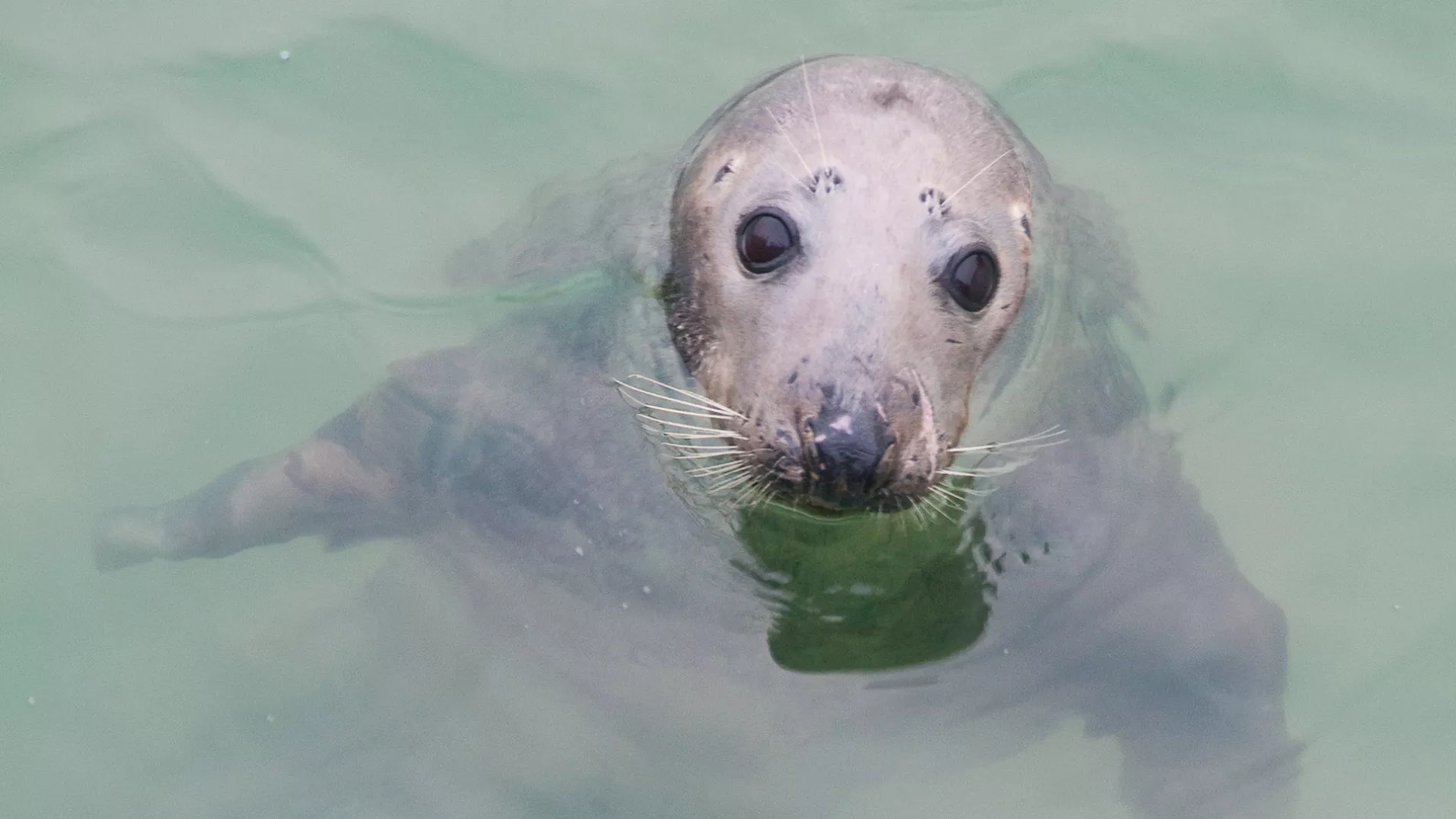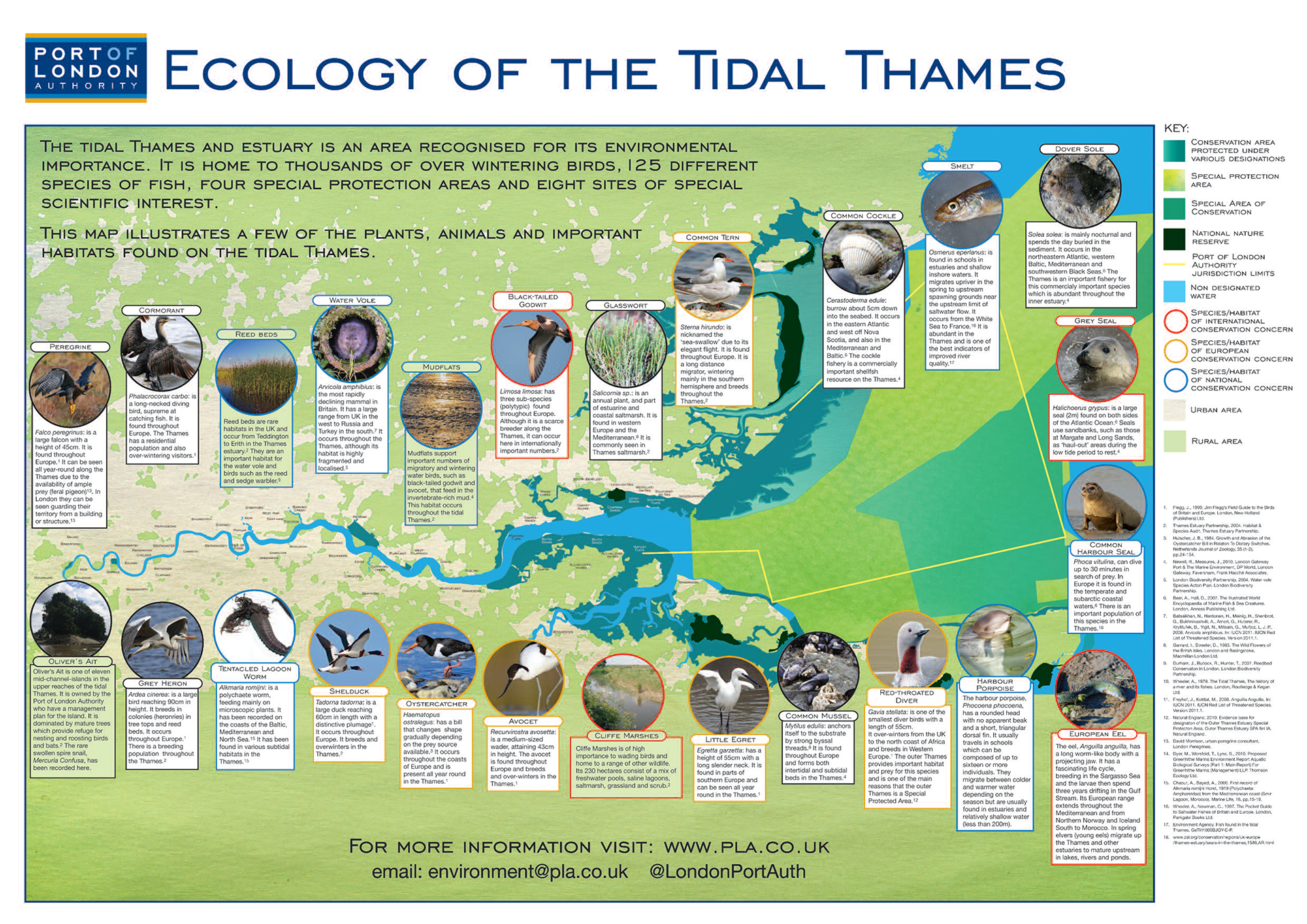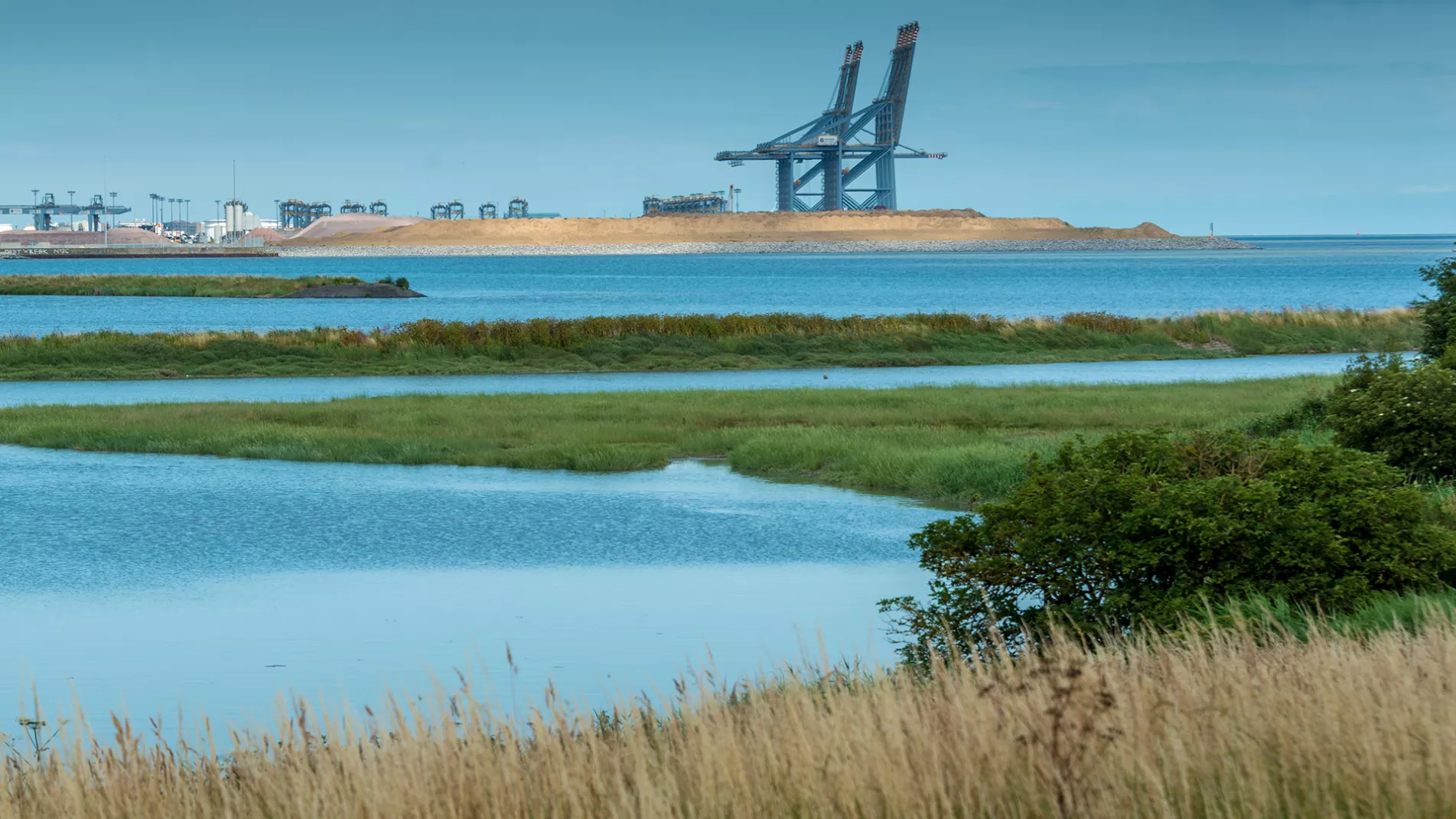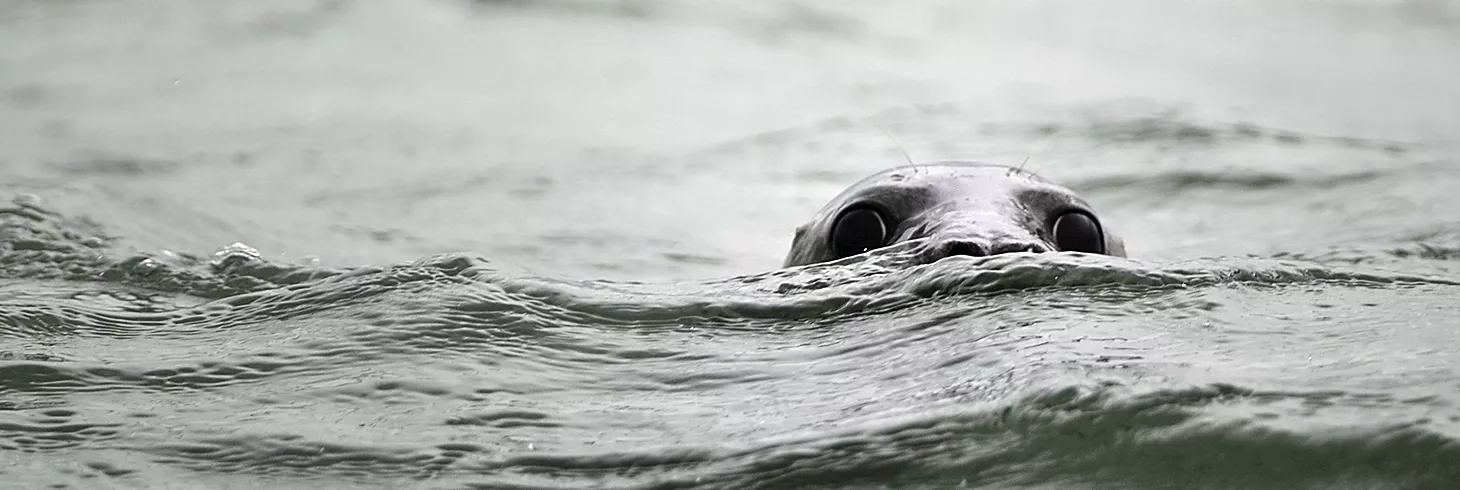Live Tides
NOTICES TO MARINERS
Charts & Surveys

Incident reporting
Life-threatening emergencies on the river:
Call 999 and ask for the Coastguard
For near miss, safety observations and incident reporting click below

Nature & biodiversity
In 1957, the Thames was declared biologically dead. But the story of the Thames is one of recovery
Our commitment
New regulations on industrial waste, construction of sewage treatment plants and major clean up campaigns over the last 70 years have resulted in a remarkable bounce-back of the natural environment on the Thames.
New regulations on industrial waste, construction of sewage treatment plants and major clean up campaigns over the last 70 years have resulted in a remarkable bounce-back of the natural environment on the Thames. But we still have further to go and more can be done.
Today, the tidal Thames and estuary is an area recognised for its environmental importance. It is home to thousands of over-wintering birds, marine and terrestrial mammals and invertebrates, 125 species of fish, and a range of plant-life. It is the location for some of the UK’s most important protected sites for nature, and performs a vital function as an ecosystem, increasing biodiversity, mitigating against floods and sequestering carbon.
A core goal of our Thames Vision 2050 is to nurture a clean river, free of sewage, waste and other pollution, supporting greater biodiversity.
We work closely with key environmental bodies including the RSPB, ZSL, Thames21 and many others, to look after this valuable habitat and the nature that lives here.
Designated nature conservation on the tidal Thames
There are several internationally designated sites and nationally important nature conservation sites within the tidal Thames.
These include Ramsar sites which are important for their wetland habitats, Special Areas of Conservation which protect habitats of European importance, Special Protection Areas which are important for the conservation of bird populations, particularly migratory species, and Sites of Special Scientific Interest which are nationally important sites. Statutory designated sites are protected by legislation, while non-statutory designated sites are protected through national and local policy. Our role at the PLA is to ensure that developments within and around the river don't negatively impact the natural environment. Furthermore, we aim to promote the services provided naturally by the river as an asset to surrounding populations.
Discover





